To start a morning meditation routine, find a quiet space, set a timer for 5 minutes, focus on your breathing, and stay present. This short practice can improve focus and calmness daily.
Starting the day with morning meditation has completely changed how I approach my mornings. You don’t need hours or special tools—just five minutes of focused breathing can make a big difference.
I know mornings can be rushed, but trust me, making time for a short session helps you ease into the day more peacefully. Plus, once you get into a routine, it becomes something you look forward to every day.
Meditating daily has given me clarity, calm, and a moment of stillness before the day’s demands. The best part? You don’t have to be an expert!
In just five minutes, you can feel more grounded, focused, and ready to take on whatever comes your way. So, let’s dive into how you can start meditating every morning for only five minutes.
Read More About Productivity Hacks
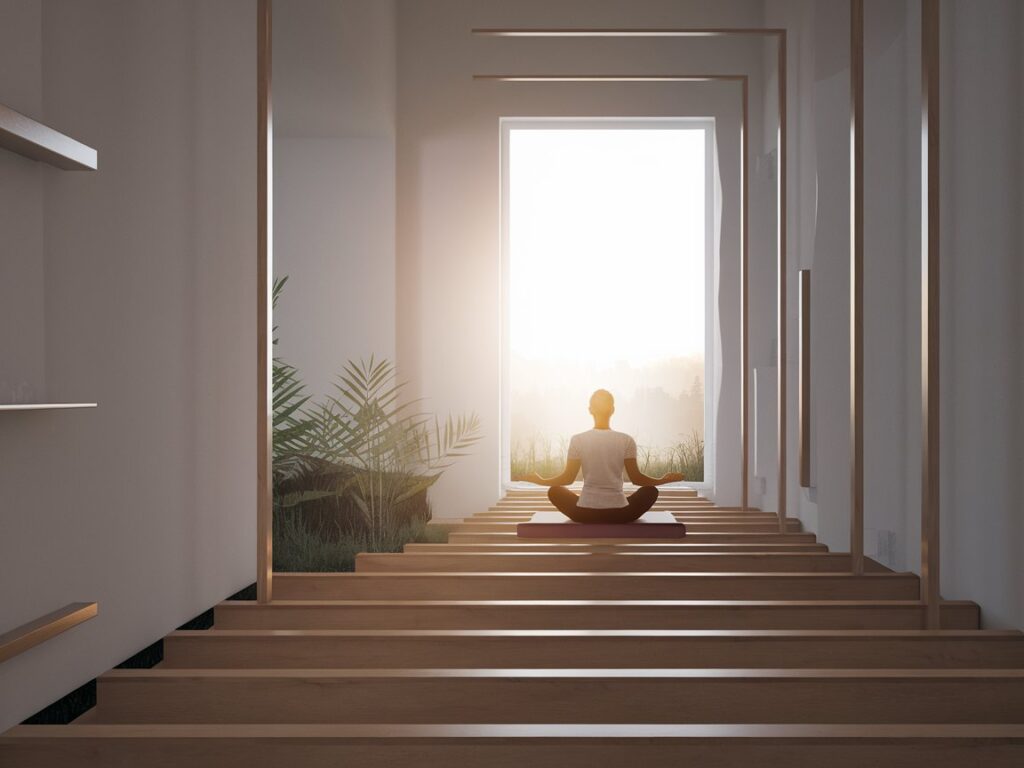
Why Meditate in the Morning?
Morning meditation sets a calm and focused tone for the rest of your day. When we wake up, our minds are usually racing with thoughts about what needs to get done.
Taking five minutes to pause, breathe, and center yourself can reduce that morning rush.
Meditating in the morning also helps you feel more in control. You begin the day with intention rather than diving straight into tasks. It’s like creating a mental buffer that protects your mind from feeling overwhelmed.
As you build your daily mindfulness habit, you’ll notice more clarity in decision-making and a deeper sense of peace. For me, this practice has made mornings less stressful and more enjoyable.
Even though five minutes might seem short, it’s enough to clear your mind and start the day with focus. You’ll notice that you’re more patient with others and yourself.
A short meditation is the easiest way to start incorporating mindfulness into your routine without feeling like it’s a big commitment.
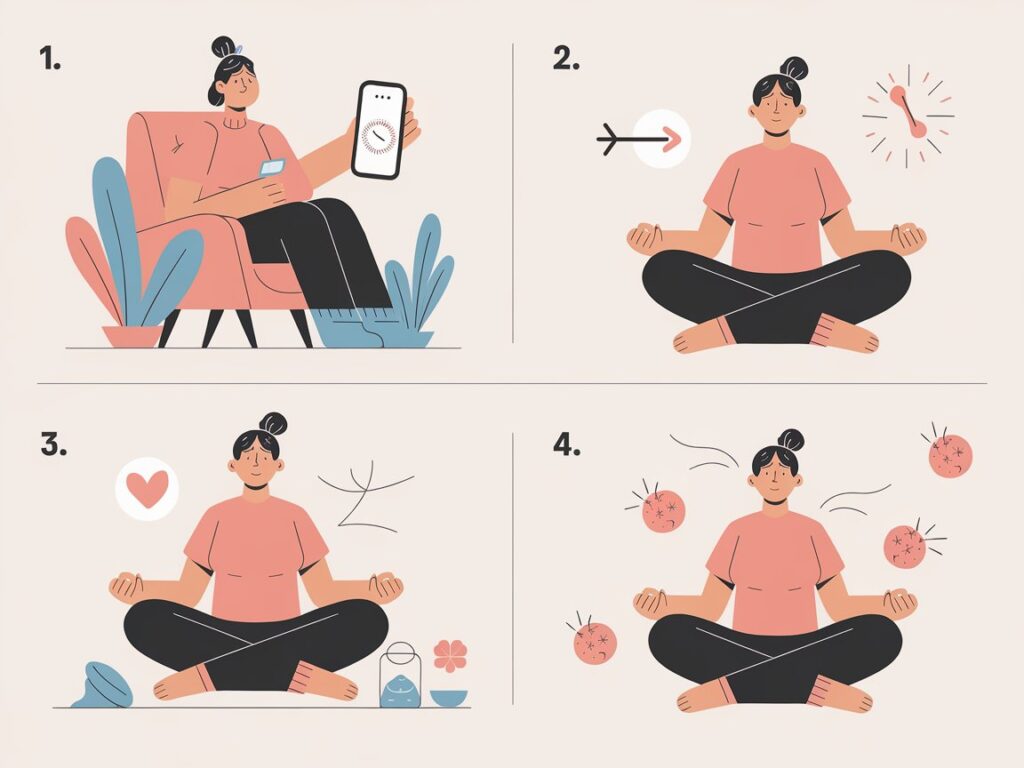
Simple Steps for a 5-Minute Morning Meditation
Starting a morning meditation routine is easier than you think. Let me walk you through the simple steps that can help you get started. These steps are practical, and you don’t need any special tools.
Step 1: Find a Quiet Spot
First, find a space where you can sit comfortably without distractions. It doesn’t have to be fancy. It could be your living room, bedroom, or even your kitchen table. The goal is to create a space where you feel calm. I personally sit on a cushion near a window to catch the morning light, which feels refreshing.
Step 2: Set a Timer for 5 Minutes
Setting a timer is key. It keeps you from checking the clock. Use your phone or a small kitchen timer and set it for exactly five minutes. Once you press start, you’ll know it’s your time to focus.
Step 3: Focus on Your Breathing
Breathe slowly and deeply. Inhale through your nose for four seconds, hold for a moment, and exhale slowly through your mouth. Breathing helps center your mind, so when thoughts pop up—and they will—gently return your attention to your breath.
Step 4: Body Awareness
While breathing, do a quick body scan. Notice if you’re holding any tension, whether in your shoulders, neck, or back. Release the tension with each exhale. I often find that taking just a few seconds to notice my body makes a huge difference in how relaxed I feel during the day.
Step 5: Stay Present and Calm
The last minute of your meditation is all about staying present. Be aware of how you feel in the moment. Don’t judge your thoughts—just let them come and go. By the end of the five minutes, you’ll feel more grounded and ready for the day ahead.
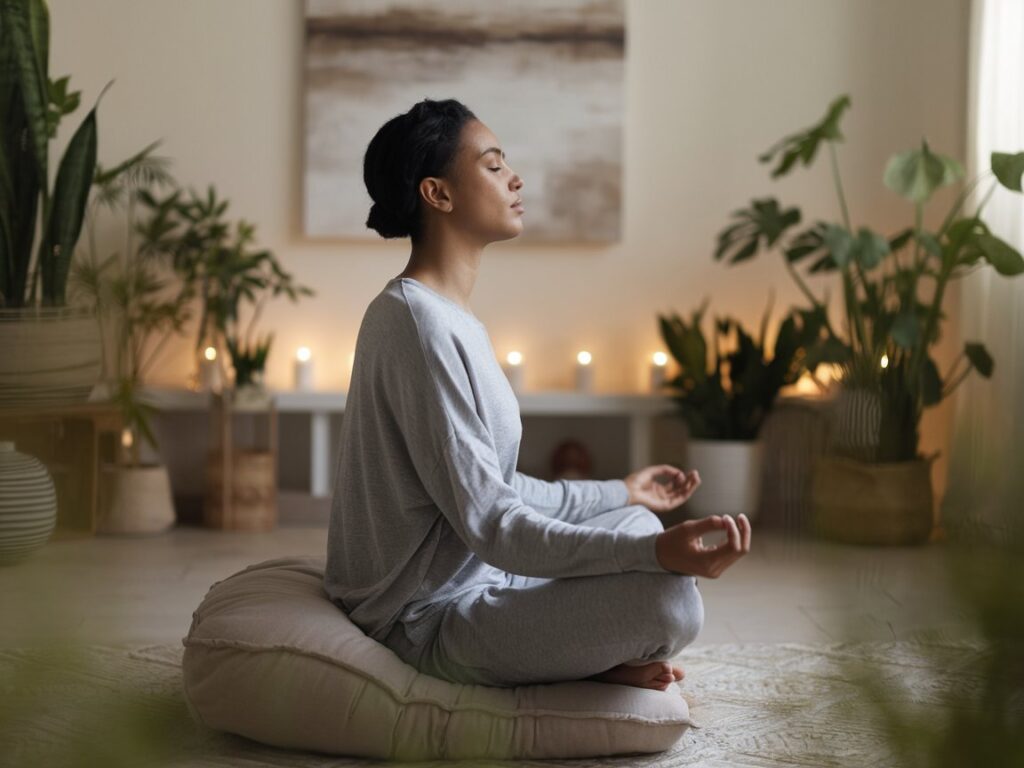
Guided 5-Minute Meditation Routine
Here’s a simple routine you can follow:
Minute 1: Deep Breathing
Start by focusing solely on your breathing. Inhale deeply and slowly, hold for a couple of seconds, and then exhale fully. Repeat this process, allowing your mind to settle.
Minute 2-4: Focus on Sensations
After settling into your breath, shift your attention to how your body feels. Is there tension anywhere? If so, breathe into those areas, mentally releasing the tightness.
Let your body relax more with each breath. Pay attention to the sensations—how your chest rises and falls, the feel of the air on your skin.
Minute 5: Set an Intention
In the last minute, set an intention for the day. It could be something simple like, “I will be patient,” or “I will stay focused.”
Setting an intention helps keep your mind centered on a positive outcome for the day. I usually find that this step makes me feel more motivated and clear-headed.
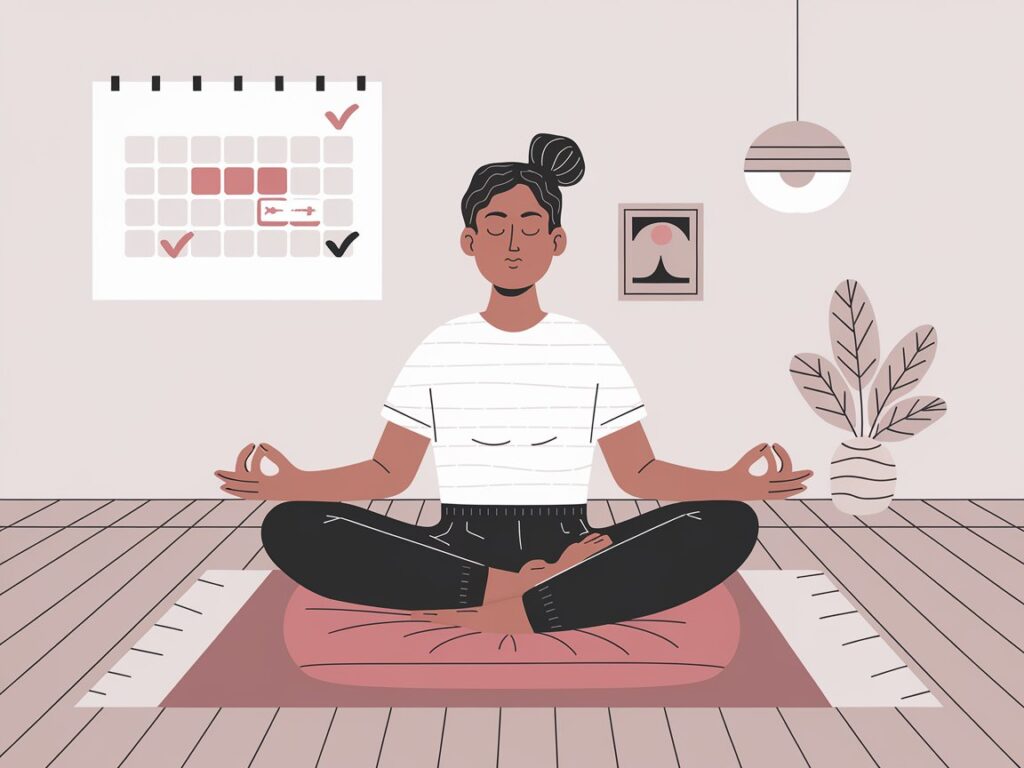
How to Build a Consistent Meditation Habit
It can be tough to stick with any new habit, but meditation, especially one as short as five minutes, is one that becomes easier with time. I’ve learned that the key to building a consistent morning meditation routine is starting small.
Start by setting a goal for three days a week. Once you’re comfortable, increase it to four or five days.
Link your meditation to another morning habit, like right after you wake up, make your bed, or before breakfast. This will help you stay consistent without thinking too much about it.
Consistency matters more than duration when it comes to meditation. It’s the regular practice that trains your mind to stay present and calm.
Over time, you’ll notice that the benefits of daily mindfulness add up, making you feel more balanced and grounded.
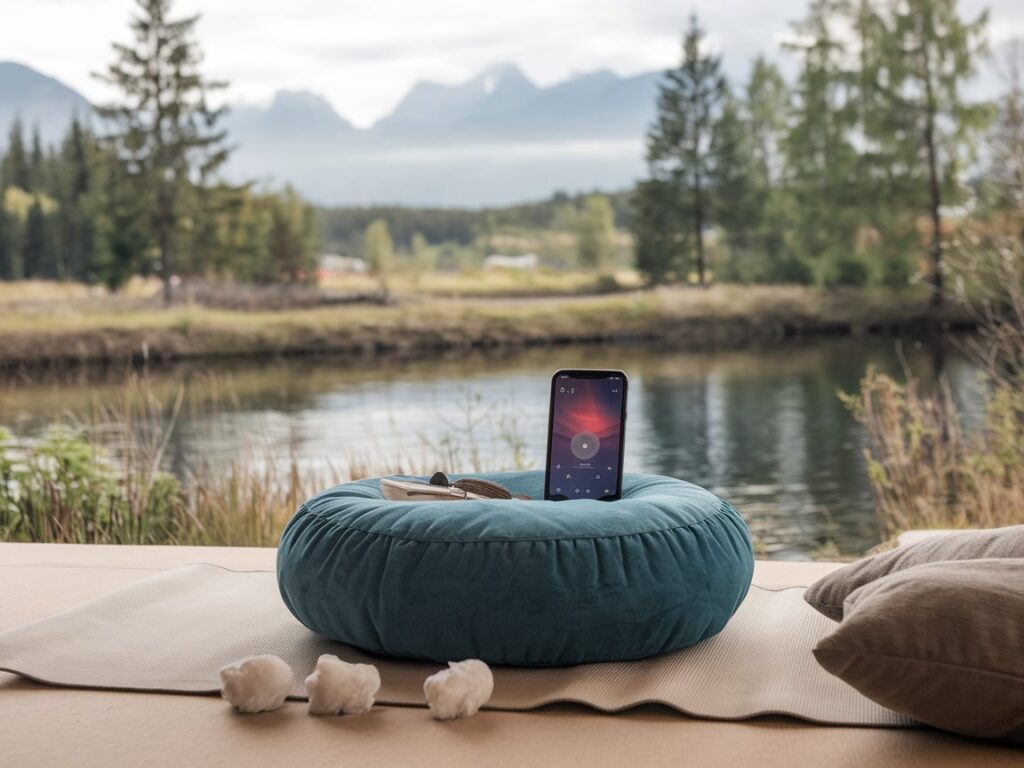
Tools and Resources to Support Your Meditation Practice
You don’t need much to get started with meditation, but there are a few resources that can make it easier or more enjoyable. I’ve tried a variety of tools over the years and here are some that I found helpful:
- Meditation Apps: Using an app like Insight Timer or Calm can be a game changer. These apps offer guided meditations that last just five minutes and provide calming background sounds or gentle reminders to keep you on track. You can find many short guided meditations that fit perfectly with a busy morning schedule.
- Music or Nature Sounds: Playing soft background music or nature sounds can enhance the experience. Whether it’s the sound of rain or soft flutes, having a calming ambiance can help you stay focused during your short meditation. I love using ocean waves in the background to feel more connected to nature.
- Comfortable Cushion: Sitting on a cushion or a soft chair can make a difference in your comfort. If you’re uncomfortable, it’s harder to focus on your breathing. I found that a small meditation cushion helps me sit upright and stay still during my practice.
My Personal Story
When I first started meditating, I struggled to sit still even for a couple of minutes. I had heard so much about the meditation benefits, but I wasn’t sure if it would work for me.
I used to think that meditation had to be long and complicated. But once I discovered the power of just five minutes, everything changed.
One morning, I decided to commit to a morning meditation routine. I set my timer for five minutes and sat down, not expecting much. The first few sessions were hard. My mind wandered all over the place, and I felt restless.
But I kept at it. Slowly, I noticed something shifting. I felt calmer, less stressed, and more focused. The best part? I actually started looking forward to my morning meditation.
It became a moment of peace in the middle of a busy life. That’s when I realized: It’s not about how long you meditate, but how consistent you are.Now, it’s a daily habit that I can’t imagine starting my day without.

FAQs About Morning Meditation Routine
Key Takeaways
- A simple, 5-minute morning meditation routine can bring immense benefits.
- Meditation improves focus, calm, and emotional well-being.
- Consistency is key—short sessions daily make a big impact over time.
A five-minute morning meditation routine may sound small, but it’s an incredibly powerful way to start your day. The best part is, it’s something anyone can do, no matter how busy your mornings are.
By focusing on your breath, relaxing your body, and setting a positive intention, you’ll notice improvements in your mood, focus, and overall well-being.
So why not give it a try? Set aside five minutes tomorrow morning and see how this short meditation can change the way you approach your day. Consistency is key, and before you know it, you’ll wonder how you ever started your mornings without it.




